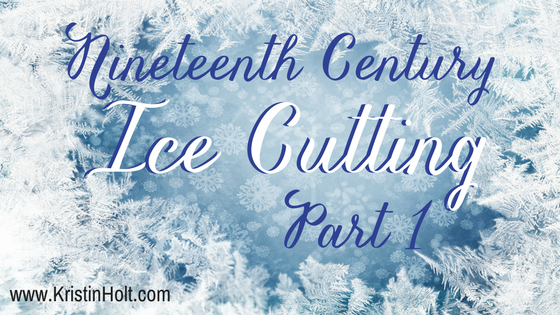
by Kristin Holt | Jan 22, 2017 | Articles
Nineteenth Century Ice Cutting, Part 1 (of 3): Ice cutting was a boom business in the mid 1800s. Tons of ice were harvested each winter in the Northeast portion of the United States, housed near rivers and railway spurs, and shipped near and far for use in the remaining seasons of the year. An image from August 1884 Harper’s Weekly, a patent from 1841, a spot of Victorian humor, and newspaper clippings shed light on the significant ice trade.

by Kristin Holt | Aug 29, 2016 | Articles
The rotary lawnmower was first patented in England in 1830. The new invention replaced the centuries’ reliable scythe in keeping lawns trimmed and neat. Americans jumped on that bandwagon, and lawnmowers became popular by the late 1860’s. Lawnmowers were advertised in newspapers of the day as well as mail-order catalogs like Sears and Montgomery Ward’s.

by Kristin Holt | Aug 26, 2016 | Articles
Milk Shakes, a frothy, cold beverage was all the rage in the late 19th century (though made without ice cream until the 20th century). Machines shook the beverage until the milk-fat whipped and the flavorings mixed in. Ice cream sodas and shave ice (first snow cones, sold as “snow balls”) became popular, too. Victorians, even in the Old West, enjoyed icy treats and drinks in the heat of the summer.

by Kristin Holt | Aug 8, 2016 | Articles
The Victorian Era drew to a close in January, 1901 with the death of Queen Victoria. The newspaper article I share within this post comes from July, 1902 (technically the Edwardian Era), but society’s expectations of table manners and propriety at a summer resort hadn’t changed. This article covers a few of the many, many “Summer Resorts” in the Victorian-Era United States and touches on why these resorts were so loved.

by Kristin Holt | Jun 20, 2016 | Articles
4 STARS for the 1879 title, Wired Love: A Romance of Dots and Dashes. As an amateur historian determined to learn what I could about the telegraph and its impact on American society, how it worked, and the challenges telegraphers faced, this sweet (innocent) love story fit the bill!













